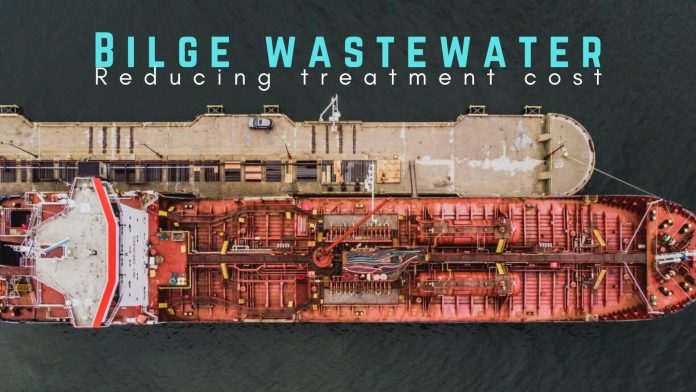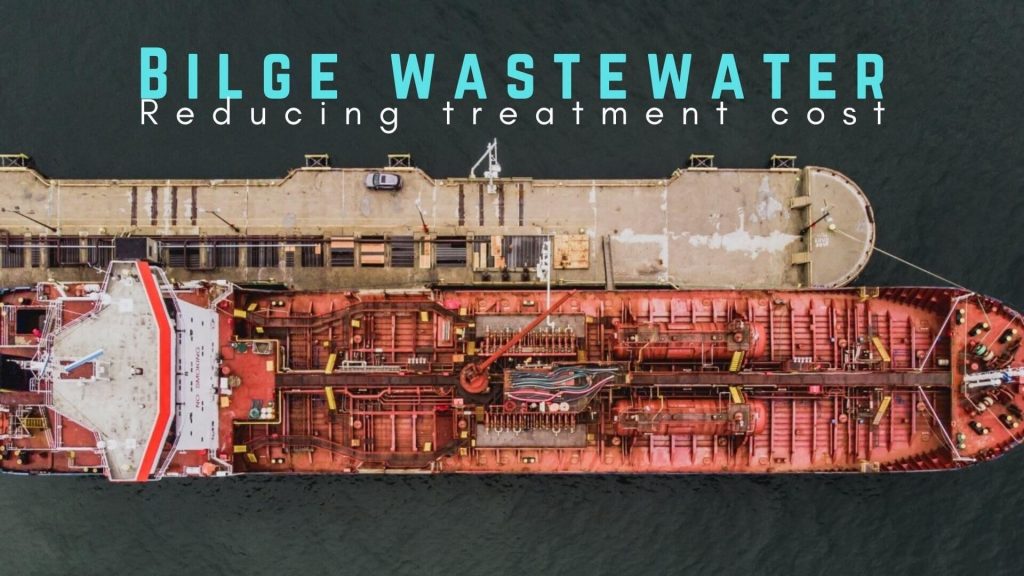
(www.MaritimeCyprus.com) The shipping industry is a broad field and includes many activities which create pressure to the natural environment. Air pollution through gas emissions and water pollution through liquid or solid discharges is the main environmental deterioration pathway. With the International Convention for the Prevention of Pollution from Ships (MARPOL 73/78), the most important international marine environmental convention, the ship emissions are categorised and discharge criteria are defined. With amendments to the convention, new standards are set every few years, increasing the need for appropriate treatment and disposal of waste. Apart from the worldwide applicable conversion MARPOL 73/78, regional legislation exists, such as the European directive 2000/59/EC, regulating comportment of ships and reinforcing water bodies' protection.
Regarding sewage produced by the shipping industry, bilge wastewater is one of the main categories produced at large volumes. Bilge wastewater is a high strength industrial wastewater type produced by every motorised vessel and includes all the water and wastewater derived from the bilges of a ship. Its composition varies and depends on the vessel's primary operations and its age, and the maintenance required. A vast range of compounds can be found in bilge wastewater, occurring from products such as lubricating oil, hydraulic fluids, oil additives, cleaning and degreasing solvents, detergents. Furthermore, spills from the engine room, water leaks from internal pipes, seawater filtrations and oily sludge further increase the complexity of this wastewater type, creating a hazardous cocktail, which needs intense effort and optimum design of processes for efficient treatment.
Depending on the ship, on-board treatment or provision of the sewage to shore facilities can occur. Various approaches and processes are implemented, depending on the special characteristics of the wastewater, the receiving volume and the discharge limitations. On shore facilities usually involve a series of different physicochemical and biological treatment processes, while on-board, treatment steps are restricted due to space limitations. Due to the complexity of the wastewater, a combination of processes is necessary for efficient treatment. The selection of processes is a crucial parameter for optimising effluent standards achievement, space restrictions, and treatment's final cost.
Physicochemical methods are frequently chosen as they achieve stable treatment performance. Unfortunately, they can severely increase the predicted treatment cost in case of peak loads or unsuitable design. On the other hand, biological and biotechnology applications are not widely used as they appear to be more unstable and prone to failure, which does not reflect the reality. Biotechnology applications can achieve high treatment performance at a low operational cost provided that there is efficient monitoring of the process by qualified staff and flexibility regarding adjustments of the process parameters.
Studies are available over the past 15 years, focussing on diverse biotechnology applications to treat bilge wastewater. From small scale laboratory applications with well-controlled conditions to industrial pilot and large scale applications, both at on-board and on-shore facilities. Some recent studies proved that there is a trend of biological systems and microbial community for bilge wastewater to adapt to the wastewater fluctuation and differentiation without losing on treatment efficiency. Leading thus biotechnology application to more flexible operational conditions without the necessity to fully control the community and conditions of growth. High-performance systems combining innovation and long-term gained knowledge are the Moving Bed Biofilm Reactors (MBBRs), worldwide encountered in industrial application for wastewater treatment. Their capacity to occupy small spaces and their robustness towards complex industrial wastewater renders them ideal for large scale on-shore or on-board applications. A recent research project (named MicrobEatBilge) in Cyprus investigated the potential of those systems at a lab-scale and a pilot-scale setup. When coupled in series, the findings revealed that MBBRs with the appropriate design and monitoring can treat bilge wastewater at a high rate and thus minimise the organic load to be chemically decomposed. Considering that the operational running cost of an MBBR is considerably lower than the operating cost of a chemical oxidation technique, such as ozonation, it would be worth attempting a large-scale application design focusing on high rate treatment with biological means.
For monitoring biotechnology processes, new tools are developed constantly, and existing ones are made easier and cost-effective for application at an industrial level. Next-Generation Sequencing (NGS) is an example, a state of the art methodology developed 15 years ago that allows reading DNA at high speed, thus fully describe the microbial community in a sample. This technique is now broadly accessible as the analysis cost has significantly decreased over the last 5 years. With this tool available, a biological process can be monitored to ensure optimum performance. The microbial insights of a bioreactor are more than valuable to evaluate and ameliorate the process.
Finally, an essential tool for optimising biotechnology processes is the scientific knowledge produced through institutional research. Bridging the gap between academia and industry is more than crucial in utilising novel techniques and methods for industrial applications. Stronger links have to be constructed to intensify cooperation and strengthen networks between these two fields with the ulterior motive to support evolution and growth with the minimum environmental impact.
Authors: Mazioti Aikaterini Anna, Vyrides Ioannis













